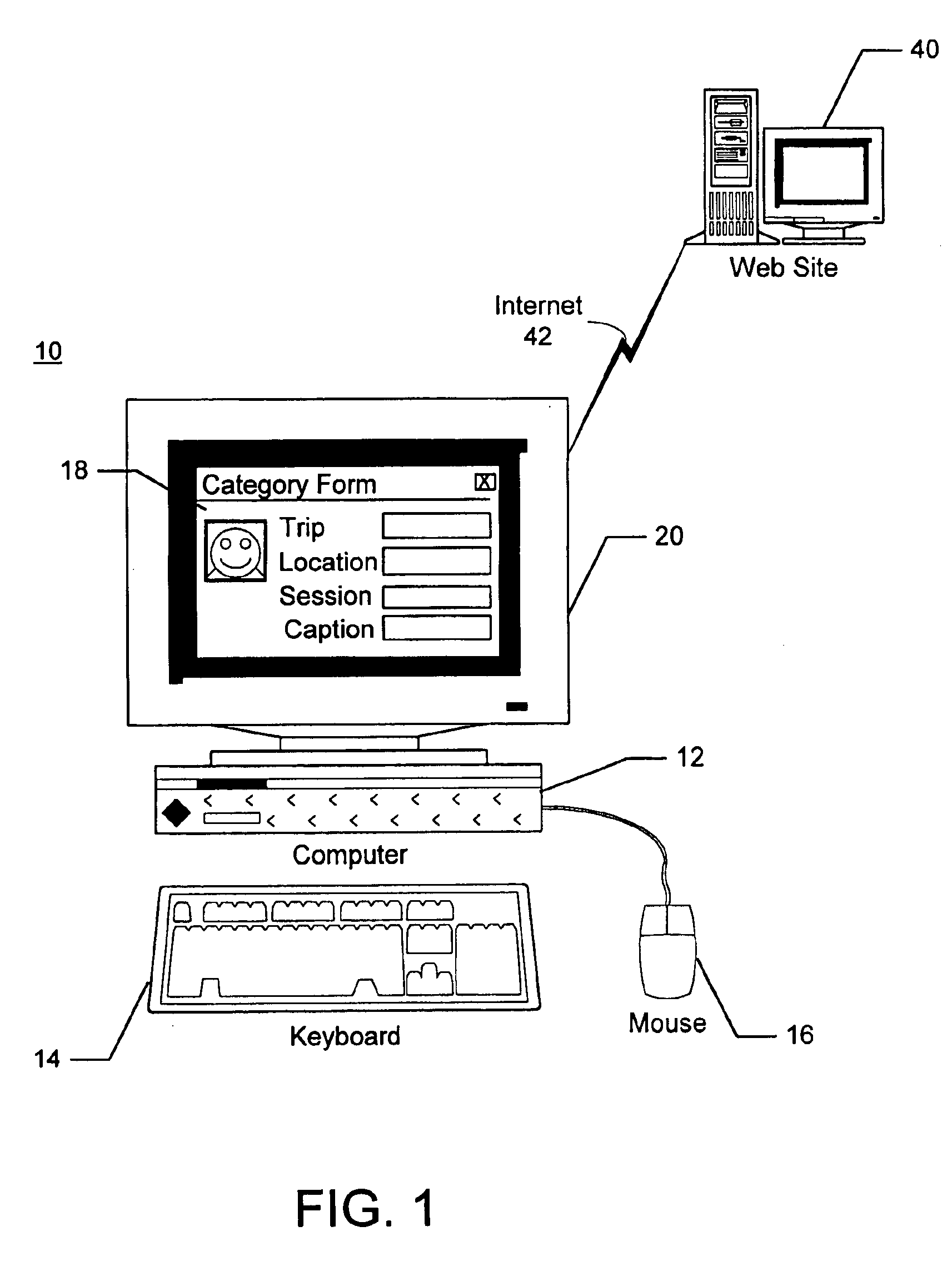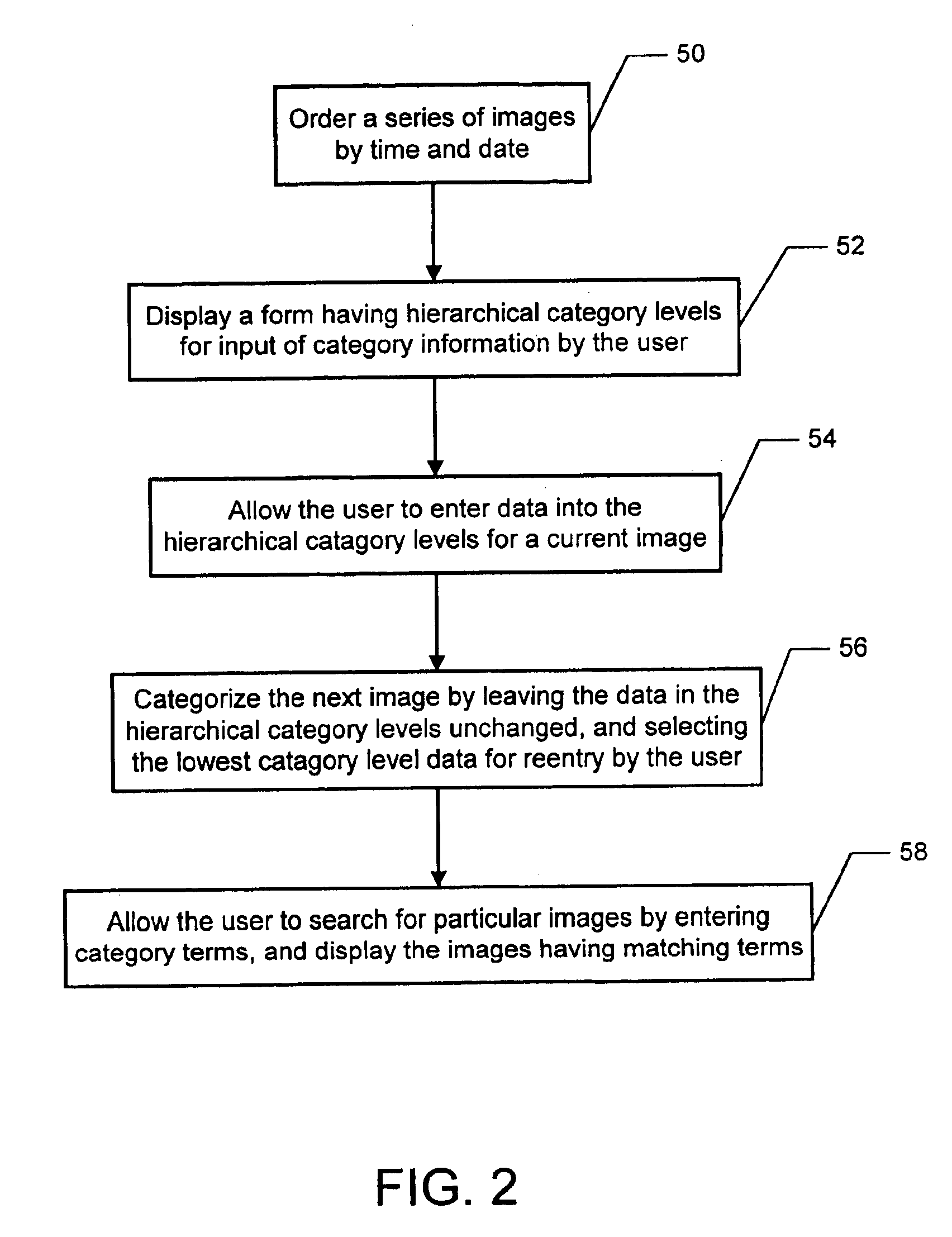Efficient image categorization
a technology of image categorization and image information, applied in the field of digital image categorization, can solve the problems of increasing the difficulty of a user to find desired images, the user's manual entry of category information for each image is extremely tedious and time-consuming, and the program has a major drawback. , to achieve the effect of reducing the effort required and reducing the errors of cataloging and searching
- Summary
- Abstract
- Description
- Claims
- Application Information
AI Technical Summary
Benefits of technology
Problems solved by technology
Method used
Image
Examples
Embodiment Construction
The present invention relates to efficiently categorizing images on a computer system. The following description is presented to enable one of ordinary skill in the art to make and use the invention and is provided in the context of a patent application and its requirements. Various modifications to the preferred embodiment and the generic principles and features described herein will be readily apparent to those skilled in the art. Thus, the present invention is not intended to be limited to the embodiment shown but is to be accorded the widest scope consistent with the principles and features described herein.
The present invention takes advantage of the fact that images are taken as people move through life in a sequence of time, and the pictures are taken along that time line. Thus, there is typically a high degree of correlation between images that are captured during a typical photography session. For example, a person who takes the camera to a birthday party may take multiple ...
PUM
| Property | Measurement | Unit |
|---|---|---|
| frequency | aaaaa | aaaaa |
| time | aaaaa | aaaaa |
| area | aaaaa | aaaaa |
Abstract
Description
Claims
Application Information
 Login to View More
Login to View More - R&D
- Intellectual Property
- Life Sciences
- Materials
- Tech Scout
- Unparalleled Data Quality
- Higher Quality Content
- 60% Fewer Hallucinations
Browse by: Latest US Patents, China's latest patents, Technical Efficacy Thesaurus, Application Domain, Technology Topic, Popular Technical Reports.
© 2025 PatSnap. All rights reserved.Legal|Privacy policy|Modern Slavery Act Transparency Statement|Sitemap|About US| Contact US: help@patsnap.com



